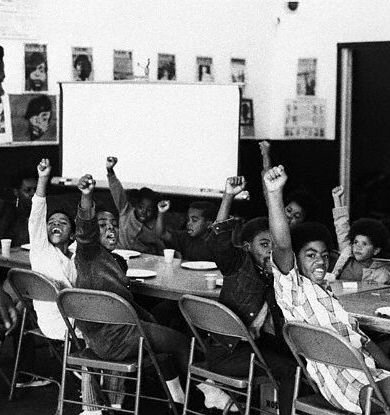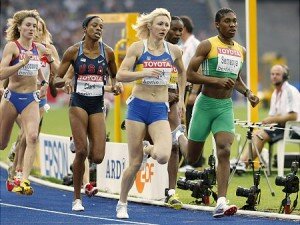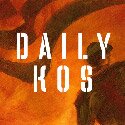Historicizing the Black Panther Party’s call to action (Part 1)
African Americans, Featured — By Guest Author on April 26, 2010 at 05:09By Ryan Kirkby, Ph.D. Candidate in the Department of History, University of Waterloo
Who were the Black Panthers, and what has their legacy amounted to? Most people can probably name the group’s Minister of Defense, Huey P. Newton; its Chairman, Bobby Seale; or its dynamic Minister of Information, Eldridge Cleaver. If specific names don’t come to mind, at the very least people remember their military regalia—the guns, the leather jackets, the berets. But once we establish these obvious points and move past the superficial towards the specifics, we begin to see that identifying who the Panthers were is a more difficult exercise when we consider the second half of the question: what is their legacy? After all, how one chooses to remember the Black Panthers—as terrorists, freedom fighters, or misguided leftists—depends in large part on how we define their legacy.
A substantial amount of scholarship on the Black Panther Party (BPP), specifically that which emerged from 1970-2008, framed the Panthers against an either/or framework: as either a band of humanitarian liberationists or a glorified gang of street thugs. This is an inadequate framework for assessing their complex and multifaceted history. As a radical group of Marxist revolutionaries who “had no respect for the laws of the United States,” the Panthers’ paramilitary modus operandi was a very real and vital part of their legacy.[1] But so too was their community activism. Rank-and-file Panthers built their reputations around many community-based initiatives, or “survival programs” as they were called, which came to include free breakfast programs, free health centers, legal aid clinics, and Liberation Schools. These projects operated under the expressed goal of empowering the ghettoized black underclass through positive self-affirming programming that would prepare them for revolution.[2] These developments are evidence that we need to move beyond stringent binary analyses of the BPP toward more comprehensive accounts that steer clear of absolutist, “either-or” renderings.
On the precipice of the early Panther histories was a small and often forgotten cluster of articles written during the 1970s that concentrated on the Party’s rhetoric, tactics, and organizational structure. Written almost exclusively for African-American publications, these essays presented relatively sober interpretations of the BPP not generally replicated by their white counterparts, the most recognized of which is Philip S. Foner’s introduction to his document collection, The Black Panthers Speak; a piece generally regarded as the first scholarly appraisal of the BPP. Written in 1970, at the height of the FBI’s bloody campaign against the Panthers, Foner offered a prescient evaluation of the group’s legacy emphasizing both its adoption of Fanonian theories of “revolutionary violence” and its “serve the people” programs. His introduction, as well as his edited collection more generally, acted as a rebuttal to the stories of the Panthers found in the mainstream press which vilified them as a group of “black extremists” comprised of “hoodlum-type revolutionaries.” The Panthers were exponents of revolutionary violence, he claimed, but not the petty criminal activity attributed to them by “die-hard reactionaries” and liberals.[3]
Other scholars followed Foner’s lead and began conducting studies on the Black Panther Party’s fixation with the revolutionary function of the gun. John Courtright’s “Rhetoric of the Gun” (1974) pointed to the declining emphasis Panthers placed on the use of violence in their newspaper, The Black Panther Inter-Communal Newsletter (originally The Black Panther), during the 1970s, while Carolyn Calloway, in her article “Group Cohesiveness in the Black Panther Party” (1977), identified a common background, ideology, and enemy among the membership – all which were underwritten by a proclivity toward self-defense and the gun.[4]
This emphasis on the gun but not on the survival programs was a common feature of early BPP histories, but what differentiated these initial interpreters was that unlike later writers, Courtright and Calloway refrained from injecting their studies with moral overtones that condemned the organization’s violent persona as thuggish. Scholarship written in the 1980s further alienated the Panthers from the realm of respectability and began re-characterizing them as the media had during the sixties—as over-hyped criminals. Curiously, the primary purveyors of this trend were not only mainstream conservatives and liberals as in previous decades, but former New Left radicals as well. Perhaps the clearest example is David Horowitz’s memoir-history Destructive Generation (1989). Using his study as a vehicle through which to reassess the New Left (and his participation in it), Horowitz, a leftist-turned-conservative, demonized the BPP as the nadir of 1960s radicalism. The period as a whole, he argued, was an infantile expression of youth angst that weakened America’s “cultural immune system,” but it was the Panthers’ criminality, packaged so seductively under the banner of vandguardism, that specifically personified the toxic ignorance of the New Left.[5]
The heart of 1960s activism is said to have occurred between 1961 and 1968-1970 when the New Left was hijacked by a cluster of impatient radicals committed to identity politics, vanguardism, and violence. The Panthers frequently stood at the centre of this takeover. As a self-styled black power organization steeped in the writings of such third world revolutionaries as Frantz Fanon, Che Guevara, and Mao Tse-Tung, they personified what seemed to be a change in the movement’s culture from integration to fragmentation, nonviolence to self-defense. In reality, things were never so simplistic. As Terry Anderson and Andrew Hunt argue, the movement did not combust in a fit of nihilism and despair in 1968/1969, but continued to mushroom well into the early 1970s in what Anderson calls a “kaleidoscope of activism” carried on by dissident GIs, feminists, and socially conscious counterculture leftists.[6]
Violence, to be sure, was an important part of the Black Panthers’ ideology, particularly from 1966 to 1971 when the group actively positioned itself against the state. As a paramilitary organization wedded to the teachings of Frantz Fanon, revolutionary violence had always been central to their strategy of liberation; yet, their espousal of violence was never simplistic as their critics suggest. As Charles E. Jones and Judson L. Jefferies argue in “‘Don’t Believe the Hype’: Debunking the Panther Mythology” (1998), the violence advocated by the Panthers was organized guerilla action led by a disciplined vanguard party, not random rioting. “Opposition to spontaneous violence was an important principle of the Party’s policy of armed resistance,” they write. Despite the presence of a strong military-minded group of brothers in the ranks, “the Panthers utilized a full panoply of tactics,” both violent and nonviolent, “to achieve organizational objectives.”[7]
Aside from offering a direct rebuke to the writings of earlier scholars, their essay signaled the emergence of a new group of academics and activists devoted to resuscitating a more nuanced history of the BPP. These studies inverted the prevailing scholarship and focused on themes either marginalized or ignored by prior writers such as FBI subversion, gender dynamics, and community activism. Following this new impulse, Akinyele Umoja’s “Repression Breeds Resistance” (2001) supplied an incisive exploration of the BPP’s underground insurgent cadre, and the complex role violence played in the Black Panther Party. The article sheds light on the revolutionary intentions of Panther violence, placing it against the darker realities that revolution, as many members understood it, was illegal.[8]
Curtis J. Austin’s Up Against the Wall (2006) helped usher in a new wave of BPP scholarship which transcended the traditional “either-or” paradigms which depicted the Party in absolute terms—as either a band of repressive outlaws, committed to violence and extortion, or a radical social uplift group devoted to liberating the poor and oppressed. Neither lionizing nor condemning the Party’s military posturing during its formative years, Austin skillfully delineated the symbiotic relationship between Panther violence and the violence enacted at the behest of the state.
“When using violence as a lens through which to see the flowering and withering of the most effective of all the myriad Black Power organizations,” observed Austin, “it becomes clear that it was not Panther violence but the violence of the state that ultimately determined the tactics of the party and of an era of black protest more generally.”[9] Police brutality, ramped unemployment, and a decaying infrastructure ravaged the black polity during the 1960s and 1970s, and helped set the stage “for the BPP’s commencement.” Yet, like Umoja, Austin did not define Panther violence simply as a defensive measure.
Unlike many of his predecessors writing from a pro-Panther perspective, Austin candidly delved into the controversial history of their offensive strategies to expose their covert training operations, their aggravated assaults against the police, and their accumulation of supplies through illegal methods.[10] In doing so, he places emphasis on the central reality: that violence was reciprocal; it was used by both the Party and the state.
Austin’s understanding of this signaled a maturing in the field away from the overly simplified interpretations of the BPP towards more thoughtful appraisals that portray it as the complex and revolutionary organization it was. His aptitude for assessing their merits and flaws was aided by the fluid interpretation he brought to bear on his analysis which depicted the Panthers as a group in constant development. In focusing on the Party during its primary years of activity (1966-1971), Austin revealed the co-existence of its paramilitary modus operandi alongside its mission of community activism by contextualizing the Panthers within the broader sixties movement culture.
Drawing on a panoply of oral histories collected from rank-and-file members across the country, his monograph reflects the kind of detailed, analytical scholarship historians can produce when they bear the task of consulting former Party members. This is especially clear when we compare it to the rather static source-base of earlier accounts which relied almost exclusively on the mainstream media, Panther memoirs, and the group’s official organ, The Black Panther. The use of oral histories has opened up the Panthers to more complex renderings which allow academics to reach beyond Oakland and the national leadership and consider Party dynamics as they existed at the rank-and-file level in cities like New York, Philadelphia, Cleveland, Milwaukee, and even Des Moines.
The study of local BPP chapters is the most recent development in Panther historiography. Despite having thirty-two chapters scattered across the country, much of the literature has shown an undue bias towards documenting the thoughts, activities, and actions of the national leadership in Oakland. One of the first studies to break free from the Bay Area was Jennifer Smith’s little-known book, An International History of the Black Panther Party (1999), wherein she constructed a case study of the BPP’s activities in Halifax, Nova Scotia to investigate the international dynamics of the Party.[11]
This was followed by Reynaldo Anderson’s essay on the Des Moines chapter, a small but influential BPP cadre in the Midwest organized around the issues of “unequal education, school busing, urban renewal, unemployment, and police brutality.”[12] Both authors focused on the local nuances of the Party’s involvement at the grassroots level, shedding light on the way it adapted itself to meet the needs of blacks living in disparate communities. Building off the methodology of these earlier works, Judson Jefferies’ edited collection, Comrades: A Local History of the Black Panther Party (2007), zeroes in on seven unexplored BPP chapters, detailing the intricate neighbourhood dynamics at work within the BPP’s community organizing. As one essayist wrote, the Panthers were more than a group of Black extremists advocating armed confrontation – “[they] had a larger goal: the destruction of the American social order and the rebuilding of a society” through “community programs to compensate for the inadequate institutions of the state and to raise the consciousness of [the] people in their local communities.”[13]
Similar conclusions are found in Andrew Witt’s The Black Panthers in the Midwest (2007), a micro study of Black Panther activism in Milwaukee. “The Party was not an extremist group principally dedicated to overthrowing the government of the United States,” Witt contends. “Rather it was an organization committed to providing essential community services for lower-income and working-class African American communities around the nation.”[14]
This may have been true for some chapters, but it was not the case for all chapters. Yohuru Willams’ and Jama Lazerow’s newly minted Liberate Territory (2008), the latest anthology to take a local approach to Black Panther history, demonstrates the tactical and (in some respects) ideological diversity within the Party. While the Panthers might have been a relatively innocuous community organization in places like Milwaukee and Winston-Salem, other branches proved to be significantly more provocative.[15] Ahmad A. Rahman’s essay in this collection, “Marching Blind,” discusses the rise and fall of the BPP in Detroit and illustrates the complex interactions between the chapter’s aboveground and underground wings, as well as how unique local conditions influenced the kinds of strategies BPP chapters employed on a larger scale.[16]
This focus on rank-and-file members and the survival programs now represents the dominant strand in Black Panther scholarship. Even if some academics, journalists, and elements of the general public continue to espouse the old one-dimensional gun-thug narrative rendered so effectively by previous generations, those most invested in the BPP’s history have taken to lauding the efforts of grassroots foot soldiers and the community services they produced. Paul Alkebulan’s Survival Pending Revolution (2007), the most recent organizational history of the BPP, crystallizes this new approach with his unrelenting focus on the activities of the rank and file. Incidentally, his monograph represents the many strengths of this current school of thought. For example, the attention he accords to those marginalized aspects of Panther history—not simply survival programs, but also regional development and women’s participation in the Party—are welcome additions to BPP historiography. Equally significant are his astute criticisms of the organization’s authoritarian leadership-style and penchant for ideological dogmatism. Finally, his observation that the Panthers missed an opportunity to make their survival programs more responsive to the needs of black urbanites by not addressing the value of economic production is indicative of the thought-provoking analyses emanating from recent scholarship.[17]
[1] Elaine Brown, A Taste of Power: A Black Woman’s Story (New York: Pantheon Books, 1992), 329.
[2] Huey P. Newton, “On the Defection of Eldridge Cleaver from the Black Panther Party and the Defection of the Black Panther Party from the Black Community,” [April 1971], The Black Panthers Speak, ed. Philip S. Foner Foner (Cambridge, Massachusetts: Da Capo Press, 1970; reprinted in 2002), 274.
[3] Philip S. Foner, “Introduction,” The Black Panthers Speak, xx-xxvi.
[4] John A. Courtright, “Rhetoric of the Gun: An Analysis of the Rhetorical Modifications of the Black Panther Party,” Journal of Black Studies 4, no. 3 (Mar., 1974), 249-267; Carolyn R. Calloway, “Group Cohesiveness in the Black Panther Party,” Journal of Black Studies 8, no. 1 (Sep., 1977), 55-74.
[5] David Horowitz and Peter Collier, Destructive Generation: Second Thoughts About the Sixties (Toronto: Summit Books, 1989), 16.
[6] Terry H. Anderson, The Movement and the Sixties: Protest in America from Greensboro to Wounded Knee (New York: Oxford University Press, 1995), 241-410; Andrew Hunt, “‘When Did the Sixties Happen?’ Searching for New Directions,” Journal of Social History 33, no. 1 (Autumn, 1999), 147-161.
[7] Charles E. Jones and Judson L. Jefferies, “‘Don’t Believe the Hype’: Debunking the Panther Mythology,” The Black Panther Party Reconsidered, ed. Charles E. Jones (Baltimore: Black Classic Press, 1998), 40-41.
[8] Curtis J. Austin, Up Against the Wall: Violence in the Making and Unmaking of the Black Panther Party (Fayetteville, Alabama: University of Alabama, 2006), 151.
[9] Ibid., xxii.
[10] Ibid., 149-158.
[11] Jennifer B. Smith, An International History of the Black Panther Party (New York: Garland Publishing, Inc., 1999).
[12] Reynaldo Anderson, “Practical Internationalists: The Story of the Des Moines, Iowa, Black Panther Party,” Groundwork: Local Black Freedom Movements in America, eds. Jeanne Theoharis and Komozi Woodard (New York: New York University Press, 2005), 282.
[13] Ryan Nissim-Sabat, “Panthers Set Up Shot in Cleveland,” Comrades, 128.
[14] Andrew Witt, The Black Panthers in the Midwest: The Community Programs and Services of the Black Panther Party in Milwaukee, 1966-1977 (New York: Routledge, 2007), 1-2.
[15] Yohuru Williams, “‘Give Them a Cause to Die For’: The Black Panther Party in Milwaukee, 1969-1977,” Liberated Territory: Untold Local Perspectives on the Black Panther Party, eds. Yohuru Williams and Jama Lazerow (Durham: Duke University Press, 2008), 232-264; Devin Fergus, “The Black Panther Party in the Disunited States of America: Constitutionalism, Watergate, and the Closing of the Americanists’ Minds,” Liberated Territory, 265-294.
[16] Ahmad A. Rahman, “Marching Blind: The Rise and Fall of the Black Panther Party in Detroit,” Liberated Territory, 181-231.
[17] Ibid., 43-44.
Tags: African-Americans, black panthers, Bobby Seale, Eldridge Cleaver, Huey P. Newton, Politics, Poverty, Racial Equity, Talking about RaceAuthor: Guest Author (94 Articles)



 Share This
Share This Tweet This
Tweet This Digg This
Digg This Save to delicious
Save to delicious Stumble it
Stumble it





 Multiple Sclerosis is incurable, but science is getting closer solving it
Multiple Sclerosis is incurable, but science is getting closer solving it How the War on Drugs gave birth to a permanent American undercaste
How the War on Drugs gave birth to a permanent American undercaste Policing gender and sex through sport
Policing gender and sex through sport








1 Comment
Thanks for the history lesson and the historiography. I’d love to see/hear more about the role of women in the Panthers. You refer to Elaine Brown’s book, but only to make a more general point about the Panthers and violence. In that book, she told a powerful story about the levels of mysogyny inside the Panthers, and about the all-too-familiar role of women as the anchors and work horses of the community programs who received little recognition and had less than ideal degrees of influence over the programming. The Panthers were certainly not the only group to force black women into the false choice between being “race people” and being “feminists,” as if one could not fight for the dignity of black people and women at the same time. But, that’s yet another part of the Panthers’ story that needs to be told. Would love to know more about what the female Panthers went on to do–what was their legacy?